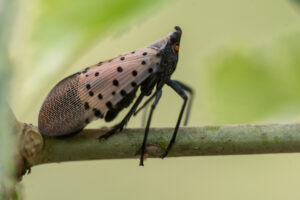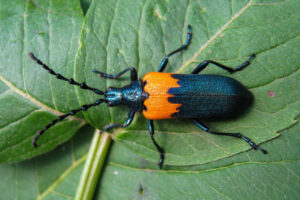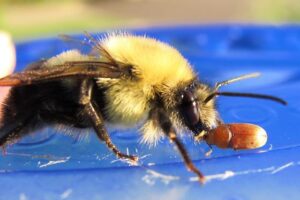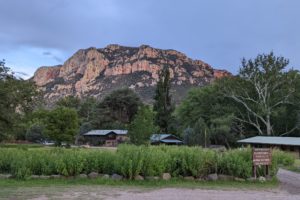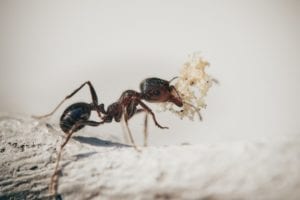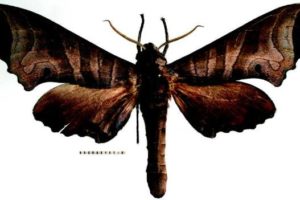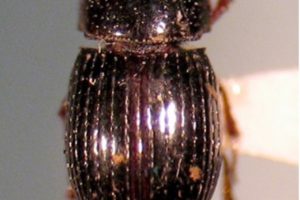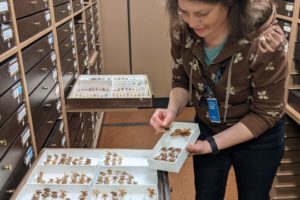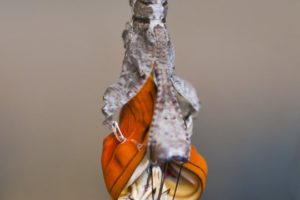
INVERTEBRATE ZOOLOGY AT CARNEGIE MUSEUM OF NATURAL HISTORY
Invertebrate Zoology maintains resources for understanding the greatest radiation of life on Earth: invertebrates. Carnegie Museum of Natural History invertebrate holdings are worldwide in coverage, especially Afrotropical and Neotropical regions. Most specimens in the collection are in the Phylum Arthropoda, with greatest emphasis on insects, myriapods, arachnids, and crustacea.
The Invertebrate Zoology Collection
The insect collection of the Invertebrate Zoology collection contains an estimated 13 million specimens of which more than 7 million are prepared, labelled, and ready for study. Invertebrate Zoology’s overarching collection’s primary strengths are Lepidoptera and Coleoptera but with strong collections in Diptera, Odonata, Hemiptera, Hymenoptera, and Siphonaptera. These collections augment studies by staff, but they are also used for research by hundreds of specialists worldwide where they constitute the basis for numerous scientific publications. These collections benefit present and future generations, and in their immensity comprise a public trust as a unique record of the natural world.
Invertebrate Zoology Collections Unique to Carnegie Museum of Natural History
| Collections including many orders of insects: | Lepidoptera collections: | Other significant type holdings: |
| H. Boyd (Nearctic, especially Cicindelidae) | A. Avinoff (Central Asia, esp. Parnassiinae) | P.P. Calvert (South American Odonata) |
| A.C. Good and A.I. Good (Cameroon) | B. Barton-Eckett (Uganda, Kenya, Tanzania) | W.J. Fox (South American Hymenoptera) |
| H. Kahl (Sweden, North America) | M.A. Carter (Pennsylvania) | H. Osborn (South American Cicadellidae) |
| S.M. Klages (French Guyana & the Amazon) | B.P. Clark (world Sphingidae including those of Boisduval, Mell, Howe, and Oberthur) | |
| G. Onore (Africa, Ecuador) | H.K. Clench (Bahamas; world Lycaenidae) | Siphonaptera |
| J.E. Rawlins (world, especially Noctuoidea) | W. Doherty (East Africa, Java, Sulawesi) | R. Traub (world) |
| J.A. Reis (Cameroon) | W.H. Edwards (Nearctic) | |
| H.H. Smith (Brazil, Colombia) | G.A. Ehrmann (world) | Coleoptera collections: |
| J. Steinbach (Bolivia) | H. Engel (Pennsylvania) | R.E. Acciavatti (world Cicindelidae) |
| H.L. Weber (Cameroon) | R.M. Fox (Liberia; Neotropical Ithomiinae) | M. Alvarenga (Brazil) |
| M.A. Weymarn (northern China) | H.A. Freeman (New World Hesperiidae) | R.A. Androw (Neartic) |
| M. Wible (Nearctic) | J.S. Garth (California) | T.C. Barr (Nearctic Carabidae; cave fauna) |
| W.J. Holland (world) | R. and J. Bell (world Rhysodidae) | |
| Collections from major expeditions: | F.M. Hope (Arkansas) | J.R. Bowman (Nearctic) |
| Eclipse Expedition to Japan (1887) | G.V. Hudson (New Zealand) | R.L. Davidson (world, especially Carabidae) |
| Avinoff/Shoumatoff Expeditions, Jamaica (1936-1940) | J. Klapperich (Afghanistan) | J. Glaser (world) |
| Cary-Carnegie Expedition, Baja California (1962) | Knyvett Collection (northern India) | J. Hamilton (Nearctic) |
| Carnegie Expedition to Ecuador (1983) | B. Krautwurm (Nearctic) | H.G. Klages (Pennsylvania) |
| Carnegie Expedition to Cameroon (1984) | Sra. R. Lafebre (Ecuador) | T. Nathan (India) |
| Project Wallace, Sulawesi (1985) | A.W. Lindsey (world Hesperiidae) | L. Pena (Chile) |
| Carnegie Expedition to Andean Ecuador (1987, 1993) | Fr. Maessen (Ghana) | H. Ulke (Nearctic) |
| Carnegie Expeditions (15) to Dominican Republic/Haiti (1987-1993, 1995, 1998, 2001-2004) | F. Marloff (Nearctic) | A. Walford-Huggins (Australian Carabidae) |
| Carnegie Expedition to Taiwan (1988) | T.L. Meade (Nearctic) | R.D. Ward (Botswana, South Africa, Bolivia, Chile, Cyprus, Jordan, esp. world Carabidae) |
| Carnegie Expedition to Malawi (1988-1989) | E.P. Mellon (Florida) | |
| Carnegie Expedition to Dominica-St. Lucia (1991) | C.G. Merker (Nearctic) | Diptera collections: |
| Carnegie Expedition to Congo (1993) | L.D. Miller (world Hesperiidae) | B.A. Foote (Nearctic acalyptrates) |
| Carnegie Expedition to Puerto Rico (1996) | R.A. Rahn (Nearctic) | C.D. Hynes (Immature Tipulidae) |
| R.F. Rockwell (Nearctic) | C.W. Young (world Tipulidae) | |
| W. Schaus (Neotropical; exceptional diversity) | ||
| M. Serrano (El Salvador) | Other major collections: | |
| J.B. Sullivan (North Carolina) | Lepidoptera, Academy of Natural Sciences, Philadelphia (Exchange 1962-1964, including collections of R.C. Williams (Hesperiidae), W.J. Coxey (Andean Ecuador), and Poey (Cuba) | |
| W. Sweadner (Nearctic) | National Forest Surveys of Allegheny (1993-96); Monongahela (1994-96); and Wasatch-Cache (1997-98) | |
| E.C. Welling (Mexico) | PA Barrens Habitat Inventory (1996-1997) | |
| R.C. Wood (Malawi) | PA Small Mammal Parasitoid Survey (1946-1953) | |
| W.W. Worthington (Bahamas) | St. Vincent College, Latrobe, PA (material of M. Wirtner and J. Schmitt of Schmitt box fame) | |
| W.H. Yackley (Pennsylvania) | University of Vermont Collections (Lepidoptera and Carabidae, 1991-1994) | |
| W.A. Zanol (Pennsylvania) |
Invertebrate Zoology Collection Inquiries
In recent years, hundreds of specialists worldwide have borrowed multiple thousands of specimens from the collection for research purposes. One of the greatest services the Section of Invertebrate Zoology makes to scientific research is by lending specimens from its collection to qualified persons for study and identification. Lending rates have increased greatly over the history of the museum.
The use of specimens from the collection, borrowed or otherwise, is governed by a general policy.
Invertebrate Zoology General Loan Policy
- Specimens are loaned only for scientific studies intended for publication or for authoritative determination.
- Specimens may be borrowed by any knowledgeable biologist (with or without institutional affiliation) as approved by the curator in charge. Student loans are made to the supervising advisor.
- Loans are made for a duration of two years, may not be transferred or forwarded to third parties, may be renewed on request, and may be recalled at any time. Type specimens are loaned for three months.
- Borrowers must promptly acknowledge reception of mailed loans, report the status of loans on request, note changes of address, and send reprints of publications resulting from research on Carnegie specimens.
- Borrowers are responsible for the integrity of borrowed specimens.
- Individual identification labels should always be placed on specimens that will be mentioned in systematic publications. The preferred institutional abbreviation is CMNH.
- Borrowers will pay for shipment when returning specimens. Type specimens should be returned by registered mail and be packed in a compartment or container separate from other specimens.
- Specimens intended as types for new taxa, or designated as types for previously named taxa, should be clearly labelled. Names or taxonomic changes written on labels and not yet published when specimens are returned should be clearly described in correspondence.
- Photographs or facsimiles of Carnegie specimens may be used only for scientific publication. Other uses require special permission.
- Specimens may be permanently retained only by systematic specialists seeking to increase the diversity of their comparative collections, and only in taxa on which they will continue to publish. When possible, exchange of Carnegie Museum of Natural History specimens for species not in the Carnegie Museum of Natural History collection is expected. Other arrangements must be made by special request.
Notes about Loans
The following specimens MAY NOT BE RETAINED:
- Type specimens of any kind, except secondary types of taxa described by the borrower.
- Specimens not authoritatively identified to species level.
- Specimens already accurately determined by another specialist.
- Best male and female of any species, or two best of each sex for Lepidoptera and Odonata.
- More than one third of the identified Carnegie Museum of Natural History specimens for that species, and IN ANY CASE more than five specimens of any given species.
If possible, retained specimens should bear label data similar to those returned to Carnegie Museum of Natural History. A retained specimen subsequently designated as a primary type must be returned to Carnegie Museum of Natural History.
IMPORTANT: Specimens with labels bearing Carnegie Museum numbers (accession, catalogue, or unique identification) may only be retained if other retention criteria are met and a written list of such numbers is returned to the curator in charge at Carnegie Museum of Natural History.
Invertebrate Zoology Inquiries
Issues not clearly addressed by this policy may be settled by contacting curatorial staff by phone, letter, or email. Please request data and specimen loans in writing. Requests received by mail or fax receive priority over those received by email, but either type of written communication is welcome.
Please direct inquiries as follows:
Most requests: James Fetzner Jr.
FetznerJ@CarnegieMNH.Org
Coleoptera: Robert Davidson
DavidsonR@carnegiemnh.org
Written requests should be addressed to:
Invertebrate Zoology
Carnegie Museum of Natural History
4400 Forbes Avenue
Pittsburgh, PA 15213-4080 U.S.A.
412.622.3259
412.688.8670 (fax)
Invertebrate Zoology Consulting Services
The Section of Invertebrate Zoology uses its resources to offer a variety of research and identification services related to environmental conditions.
History of the Section of Invertebrate Zoology
The entomological collections at Carnegie Museum of Natural History are the continuation of a dream first envisioned by the museum’s early director, William Jacob Holland which was carried through by his successor, Andrey Avinoff. The collection’s historical strength in Lepidoptera results directly from having had these active lepidopterists as influential directors for over half of the museum’s existence.
Holland was America’s great popularizer of butterflies and moths in the first half of this century. Holland’s Butterfly Book (1898) and Moth Book (1903) are both still widely used. Holland established the entomological holdings of Carnegie Museum by the donation of his private collection exceeding 250,000 specimens. He supported active collectors worldwide, obtaining major collections from previously uncollected regions between 1890 and 1930 through the efforts of W. Doherty, H.H. Smith, H.L. Weber, J. Steinbach, S.M. Klages, and many others.
Under Holland’s directorship, curator Hugh Kahl was responsible for the curation and arrangement of the insect collection in the Section of Insects and Spiders until 1940, with a special emphasis on dragonflies.
During Avinoff’s tenure as director in the 1930s and the 1940s, the entomological curators were lepidopterist Walter Sweadner and hymenopterist George Wallace. Sweadner was the first person to attempt comprehensive curation of the already vast Lepidoptera collection and conducted fundamental research on geographical variation and speciation in wild silkworm moths from the western United States.
After Sweadner, Harry Clench became curator and became a leading worker on lycaenid butterflies with a special interest in Caribbean taxa. Clench overlapped with another lepidopterist in the 1960s, curator Richard Fox, who published on African and Neotropical butterflies, especially the delicate but diverse ithomiines from South America.
Meet the Researchers
Ainsley E. Seago, Ph.D.
Associate Curator

James W. Fetzner, Jr., Ph.D.
Assistant Curator
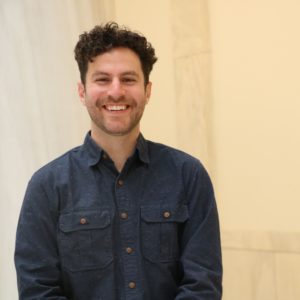
Kevin Keegan, Ph.D.
Collection Manager

Robert Androw, B.S.
Collection Manager
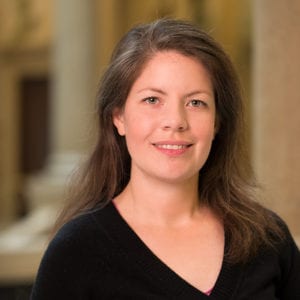
Vanessa Verdecia, B.S.
Collection Assistant
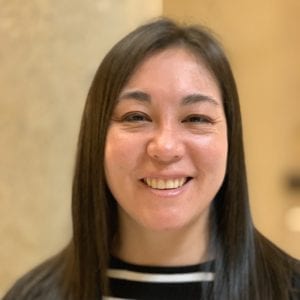
Hilary Fetzner, M.S.
Laboratory Assistant

Chen Young, Ph.D.
Associate Curator Emeritus
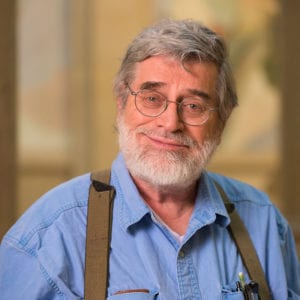
Robert Davidson, M.S.
Collection Manager Emeritus
Invertebrate Zoology Blogs

Do No Harm: Dealing with Spotted Lanternflies
by Jonathan Rice Spotted lanternflies are a “true bug,” cousins of the cicada and stink bug. Unlike our native bug species, these …
Can’t Choose Just One: Asking an Entomologist to Name Their Favorite Native Species
by Bob Androw I was recently asked what my favorite native species of beetle is. A seemingly simple question, but one with …
Beyond the Simple Ecosystem Graphic: Teaching About Biodiversity and Pollination
by Pat McShea You probably remember some version of this graphic: simple line drawings linked by arrows to chart energy flow through …
Two Perspectives on Attending a Course on Moths and Butterflies in the Southwest
by Kevin Keegan and Vanessa Verdecia Kevin Keegan, Collection Manager of Invertebrate Zoology (IZ), and Vanessa Verdecia, Scientific Preparator for IZ, recently …
Incredible Junk Food Diets: Creatures That Clean Up Our World
by Shelby Wyzykowski with scientific information provided by Dr. Ainsley Seago, Associate Curator of Invertebrate Zoology. What could be more thrilling than …
Natural History Discoveries
by Vanessa Verdecia “Why do you collect so many?” That’s a common question we get from people who experience a glimpse into …
A Little Harbinger of Spring…
by Bob Androw As I begin to write this, it’s early March, the sun is shining, the temperature outside is climbing over …
New Moth Species Marumba verdeciae Named for CMNH Scientific Preparator
Specimens from Carnegie Museum of Natural History are frequently cited in the research papers of scientists from all over the world. For …
Insect metamorphosis: the key to a fresh new start
For many people, the new year represents an opportunity to make a fresh start, consider self-improvement, or turn over a new leaf. …
Section of Invertebrate Zoology Collection Featured in Museum Displays
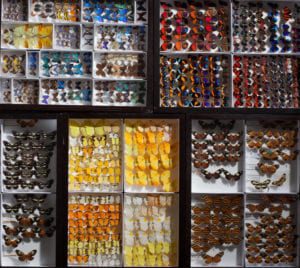
The Invertebrate Zoology collection is found throughout the museum, including in front of the Carnegie Museum of Natural History gift shop in the grand staircase area—the famous butterfly wall. Invertebrate Zoology collections can be found throughout the museum in other places as well, like on the third floor behind the R. P. Simmons Family Gallery.

